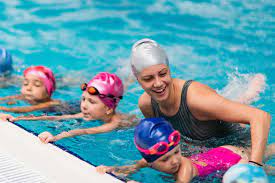Understanding the importance of a water safety course for real-world risks
Australia is a nation surrounded by water — beaches, rivers, dams, and backyard pools are part of everyday life. But with that privilege comes risk. Drowning remains one of the leading causes of accidental death for children under five in Australia, and countless adults misjudge water hazards every year. So, what stands between a close call and a tragedy? The answer is often education — and that starts with a quality water safety course.
What class 2 water really means
The term class 2 water refers to environments where the risks are higher than in a controlled swimming pool but lower than in unpredictable natural waterways like surf beaches. Think rivers with slow-moving currents, lakes, and larger public aquatic facilities. Class 2 water presents varied conditions: depth changes, slippery edges, poor visibility, and inconsistent bottom surfaces.
Understanding how to respond in these environments is critical — especially in a country where water-related recreation is woven into the culture. That’s where structured training makes a difference.
Why every Australian should consider a water safety course
Completing a water safety course isn’t just for those working in aquatic education or lifeguarding. It’s for parents who supervise children, teens who surf or swim at the river, and older adults returning to fitness through water-based activities.
These courses build real-life competence:
- Recognising unsafe conditions: Learn how to evaluate open water sites and spot hidden dangers.
- Developing survival skills: Practise treading water, safe entry techniques, and floating in different conditions.
- Performing rescues: Understand when to assist and how — without putting yourself at risk.
- Emergency response knowledge: Master the basics of CPR, managing near-drowning incidents, and alerting emergency services.
Courses typically include both dry theory and pool-based or open-water training, ensuring knowledge is not only gained but practised.
In Australia, participating in a recognised water safety course can be the difference between helplessness and confidence in a water emergency.
Personal stories that highlight the stakes
Take Joel, a 17-year-old from regional Victoria. An afternoon with mates at a local weir almost turned fatal when one friend slipped from a mossy edge. Joel had recently completed a basic water safety course through his high school and recalled the importance of non-contact rescues. Instead of jumping in, he used a long tree branch to pull his mate to safety — and waited for help.
Or Louise, a grandmother from Perth, who enrolled in a refresher course after years away from the water. A few months later, she calmly handled her toddler granddaughter’s slip into the backyard pool, acting quickly and confidently.
These aren’t rare stories. They’re the sort of incidents that play out across the country — sometimes with happy endings, and other times with devastating ones.
How water safety training supports broader community wellbeing
A well-informed public is a safer one. Structured training helps reduce preventable drownings, lessens pressure on emergency services, and builds a sense of responsibility in everyday Australians.
For professionals — swim instructors, childcare workers, educators — courses provide formal accreditation that may be mandatory in many job roles.
But beyond policy and qualifications, the ripple effects are cultural. Kids who see adults wearing life jackets, checking weather conditions, and understanding tides grow up taking water safety seriously.
📌 If you’re unsure where to begin, a general water safety course is the first step toward smarter decisions around all types of aquatic environments.
What to expect in a class 2 training environment
Training in class 2 water settings often simulates real-world challenges while maintaining a controlled learning space. That means exposure to:
- Cold water immersion: To build understanding of shock responses and body control.
- Variable depth conditions: So participants practise adapting to changing underwater terrain.
- Low visibility situations: Teaching how to rely on sound, communication, and touch.
Courses may use lakes, calm ocean inlets, or purpose-built aquatic centres that mimic real conditions. The aim is not just competence — it’s resilience.
Know the facts, not just the fears
In 2023 alone, over 280 people drowned across Australia — and a further 570 non-fatal drowning incidents were reported. Source: Royal Life Saving National Drowning Report 2023.
The numbers tell a confronting story, but they also point to an opportunity. Many of those lives could have been saved with greater awareness, practical skills, or quicker responses.
Final thoughts: knowledge is your best flotation device
You don’t have to be a surf lifesaver to benefit from a water safety course. Whether you’re teaching your child to swim, planning a fishing trip, or just enjoying weekends by the river, understanding aquatic risk is vital. In a country like Australia — where water is part of the lifestyle — confidence without competence is dangerous.
So the question isn’t should you take a course. It’s why haven’t you yet?
Start your journey today with a recognised water safety course — and bring the peace of mind that only knowledge can offer.

